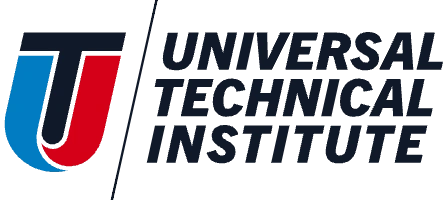Wind turbines are clean and renewable energy sources that are vital to the energy industry.
If you’re looking into becoming a wind turbine technician, there is a lot of value in having a good understanding of different types of wind turbines, how they work and the environments they are found in.
It could be beneficial to take wind technology courses such as Wind Turbine Operation to gain the knowledge and skills needed to pursue a career. At Universal Technical Institute (UTI), we offer a 30-week Wind Turbine Technician program that can help you get hands-on training in a classroom and lab setting.1
Read more to learn about offshore and onshore wind turbines, what their key differences are and what it takes to service these energy-producing machines.
What Are the Differences Between Onshore and Offshore Wind Turbines?
Both onshore and offshore wind turbines have similar mechanics and are made with similar materials. The biggest difference is they are located in two different types of wind farms. These farms are areas where many wind turbines are grouped together to produce electricity.
Onshore Wind Turbines
As the name suggests, onshore wind turbines are wind turbines located on land. They are typically found in more rural areas where buildings and other obstacles don’t disrupt the air flow.
Offshore Wind Turbines
Offshore wind turbines generate electricity from the wind that blows across the sea. The wind found there is typically more consistent, thanks to the absence of surrounding land and objects. The air flow also reaches a greater speed where offshore turbines are located.
Advantages of Onshore Wind Turbines
Onshore wind energy stands out in quite a few ways, such as:
- Cost-effective: Onshore wind turbines prove to generate one of the least expensive forms of renewable energy. They are also significantly less expensive than offshore wind turbines.
- Better environmental impact: They create significantly less emissions than other energy sources.
- Easier installation and maintenance: Typically, onshore wind farms can be built in months and are cheaper to maintain compared to offshore.
Cons of Onshore Wind Turbines
Where there are pros, there are also some cons when it comes to onshore wind turbines. Reasons include:
- Wind inconsistency: Constant changes in the wind direction and speed highly affect onshore wind turbines.
- Available land: Locating areas to set up wind farms can be a struggle as they have to fit a certain standard in terms of the wind currents and terrain of the surrounding area.
- Less power efficiency: Compared to offshore wind turbines, onshore wind farms aren’t as dependable and typically produce less energy.
Advantages of Offshore Wind Turbines
Some positives of offshore wind farms include:
- Reduced environmental impact: Strict access to offshore wind turbines and their location — typically miles away from local populations — help protect surrounding ecosystems.
- Better efficiency: The higher consistency and speed of wind found by the ocean allow offshore turbines to produce the same amount of energy as onshore ones, with fewer parts.
- Location: It is typically easier to find locations to build offshore wind farms as there is so much space in the ocean.
Cons of Offshore Wind Turbines
There are some cons when it comes to offshore wind turbines, such as:
- Maintenance and servicing: While higher wind speeds are positive for generating electricity, it becomes a challenge when it comes to repairing offshore wind turbines. They are a lot less accessible than onshore turbines and require boats and helicopters to get to.
- Costs: Both initial costs and maintenance are more expensive when it comes to an offshore wind farm. It requires a more intricate infrastructure like platforms, underwater cables and additional safety features that are required but shoot up the cost.
Maintenance Required for Onshore and Offshore Wind Turbines
In general, servicing onshore and offshore wind turbines includes inspection of the gearbox, generators, yam systems, surveying the foundation, examining bolts, and more. Wind turbine technicians play a huge role in making sure everything is working correctly and efficiently.
The demand for wind technicians is growing—employment is projected to grow 60% from 2023 to 2033.63 In fact, according to the Bureau of Labor Statistics (BLS), wind turbine service technicians are considered one of the fastest-growing occupations.
Read: How to Become a Wind Turbine Technician
Wind Industry Jobs
According to the BLS, the median annual salary for wind power technicians in the United States was $61,770 in May 2023.61 This means half earned more and half earned less. Keep in mind that salary depends on several factors, including experience, employer, demand, and cost of living in the area.
Wind technician training program graduates are prepared for entry-level roles. Over time, technicians may be able to advance their careers with experience and hard work.77 Jobs include:
Entry level:
- Wind turbine technician
- Installation technician
- Field service technician
Advanced:
- Troubleshooting technician
- LOTO I & II specialist
- Wind farm support specialist
- Research and development
- Electrical engineer
- Environmental engineer
- Materials engineer
Train to Become a Wind Technician
Gain the knowledge and skills needed to service wind turbines. Through UTI’s Wind Turbine Technician program, learn from experienced instructors who can help you grow the technical skills required to pursue a career in wind!
Ready to learn more? Request more information to learn more about our wind technician training program, our campus locations and the application process. You can also enroll today!
Campuses That Offer Wind Technician Training
Universal Technical Institute of Illinois, Inc. is approved by the Division of Private Business and Vocational Schools of the Illinois Board of Higher Education.



